Review: Ithell Colquhoun - Between Worlds
Tate St Ives - until 5th May, then at Tate Britain - 13th June – 19th October
I’d always wanted to go to the Tate gallery in St Ives, a bit like a collector wanting to complete the set, Modern, Britain, Liverpool, I’d done them all, so I wanted to get to this last, out of the way, outpost. Cornwall was also unknown territory to me, family holidays have tended to focus on getting some warm weather on our bones, so I haven’t seen much of the UK at all, something I do intend to remedy in retirement.
Thrown into the attractiveness of the mix was also the prospect of going on the Night Riviera Sleeper. Now, I know train travel, especially across Europe, is all the vogue but I just to want to lay claim to not jumping on the bandwagon, I’ve always loved trains. They’re just so romantic, maybe it’s all the films of people coming and going on trains, parting and meeting, even decades of commuting wasn’t enough to put me off!
So, with twenty something, middle child enticed along for the trip, we set off on our adventure. The Night Sleeper was great, and I’m not affiliated to them in any way, it’s not cheap, but this was one of those bucket list things I’ve wanted to do for some time. Clean, actually quite luxurious, except that the beds are a bit narrow, lots of freebies in the lounges both on the train and in the stations, all made for a great start.
It was a bit drizzly when we arrived but it was quite lovely to see actual blue sea and bright yellow sand, no wonder it’s known as the English Riviera. We dumped our bags at the hotel and headed off for a wander around. St Ives was as picturesque as I expected it to be, quite hilly, but with lots of darting off, narrow lanes, lovely ancient cottages, a beautiful harbour, all suggestive of a deep, entangled history.
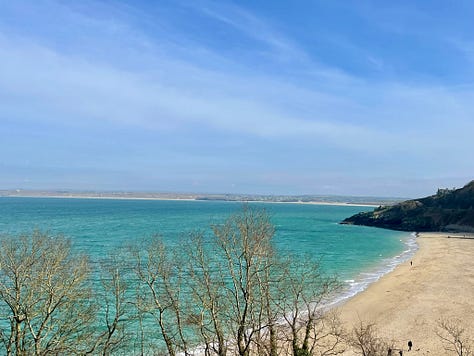

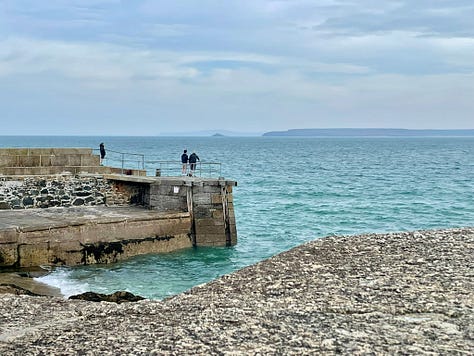
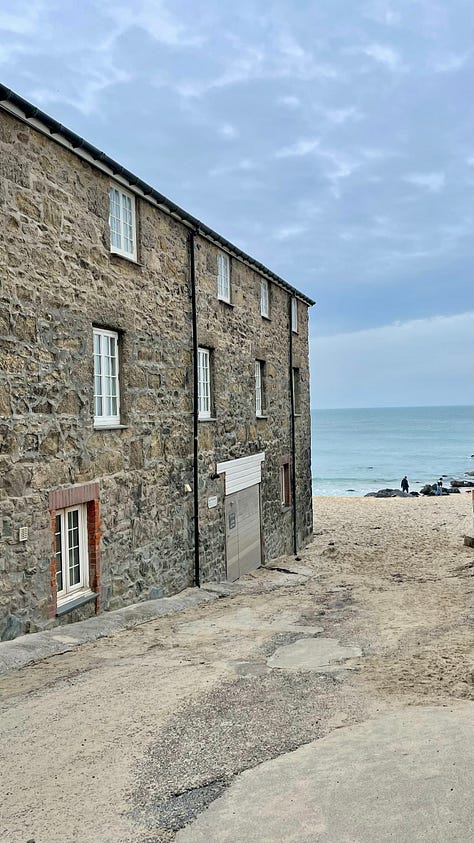
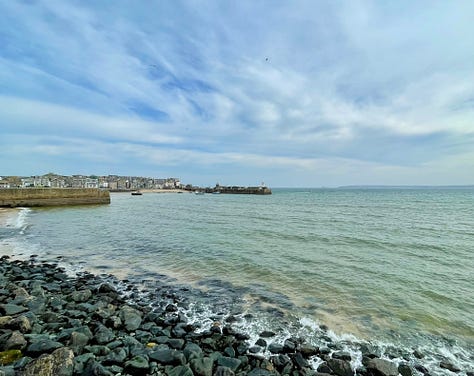

I knew that St Ives had an arty connection but I hadn’t realised how significant it was in terms of art history, I picked up this book, The St Ives Artists, by Micheal Bird which gives an excellent, easy to read, history of St Ives as an artist colony. He explains how many artists connected with the avant garde art movements that really shifted the concept of art; cubism, constructivism, abstraction, came to Cornwall and St Ives for inspiration. Tate set up the gallery in recognition of this using art by artists that lived or worked here from their collection, placing it in situ in some ways, I guess.
The current exhibition is a major retrospective of Ithell Colquhoun, a British Surrealist artist. I’m going to confess no knowledge of Colquhoun but I did learn a lot by the end of the exhibition. It’s a big exhibition with over 200 artworks covering her whole career. Colquhoun was interested in the occult and different religions as well as the unconscious, the first section shows automatism, where art is made by chance rather than intent, an attempt to let the subconscious drive creativity. Here’s some of her Stillomancy and Fumage experiments.
Her interest in religions led to biblical paintings that reflected on multiple religions, Aaron Meeting Moses, 1932, depicts the tale of Moses’ brother Arron being told to go and meet Moses in the desert. Colquhoun casts Arron as female, who appears to arrive bearing a flower. I feel this painting may be full of symbolism I missed but I did appreciate its scale and monumentality as well as the style. It feels very cleanly executed, almost like a sharp edged collage, no impressionistic gauze here.
From here, the exhibition charts the artist’s move into Surrealism, I really liked Bonsoir, 1939, a series of images that were to form the storyboard for a film centering on a couple’s evening out in Paris. There are snatches of what this evening might be, a bed, drinks, lipsticks, all signifiers of the latent sexual content behind these kinds of objects, she seems to home in on the unsaid, the film was never made. It made me think of Tracey Emin’s, My Bed, 1998, when you think of the furore that created in terms of what art is, or should be, you get a sense of how far artists were pushing the boundaries in the 30s.


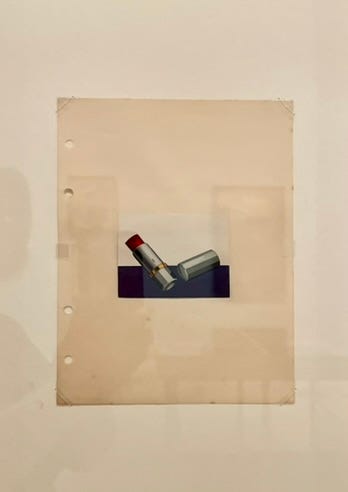
I loved her paintings in the next section, the labelling tells us the artist was influenced by Dali’s work, you can see that in paintings such as Rivieres Tiedes (Mediterranee), 1939, Water Flower, 1938 and the poster image for the exhibition, Scylla (Mediterranee), 1938. I like the quality of them, they’re so clean, and they have a textural feeling to them. Colquhoun said of Scylla that it was suggested to her by what she could see in the bath, her legs, but there are obviously different interpretations as well, leading to an ambiguity that allows for the viewer to engage with the painting in different ways.
Gorgon, 1946, was fascinating, in a process called decalcomania, paper is pressed against surfaces blobbed with paint and this is used as the starting point for a final image. Here’s the paper peel for Gorgon and the final image. The peel provides the inspiration and it gets worked up by the artist. For me, it’s like a fantasy world within a shell, the colours are particularly affective, the artist created a Gorgon from it as she found the image on the paper peel horrific, but I thing it’s more of a calming, dream like state.
The final parts of the exhibition bring together her interest in the interconnectedness of the human condition, such as between religions, paintings like Diagrams of Love, 1940-1, draw on the heart as a symbol of love that transcends differences in religions, and in nature and history, such as La Cathedral Engloutie, 1952, the image shows connecting stone circles, some above and some below the water but always connected, an interplay between nature, man, history and never ending cycles.
This is a fascinating retrospective of Colquhoun’s artistic career, I learned so much about her work, you can see the influences of the avant garde movements on her work and her responses to them. The exhibition rightly starts in St Ives as Colquhoun spent a good part of her life in Cornwall where she felt connected to its environment and history, it moves to Tate Britain in June.
The only gripe I have is that the curation focuses a lot on her mysticism, interest in magic and sexuality, while this is part and parcel of who she was as an artist, the amount of focus seems to take away from any discussion about the absolute quality of her work. I’d have liked to have heard more about how her work was received by contemporary and modern audiences as well as critics, or was she just under the radar, as were many women artists?
But apart from that, it’s worth a visit, either in London, or hop on a train to St Ives! Next week, more from the adventure in St Ives when we visit Barbara Hepworth’s sculpture studio.
Rita Fennell
Gallery Tart!




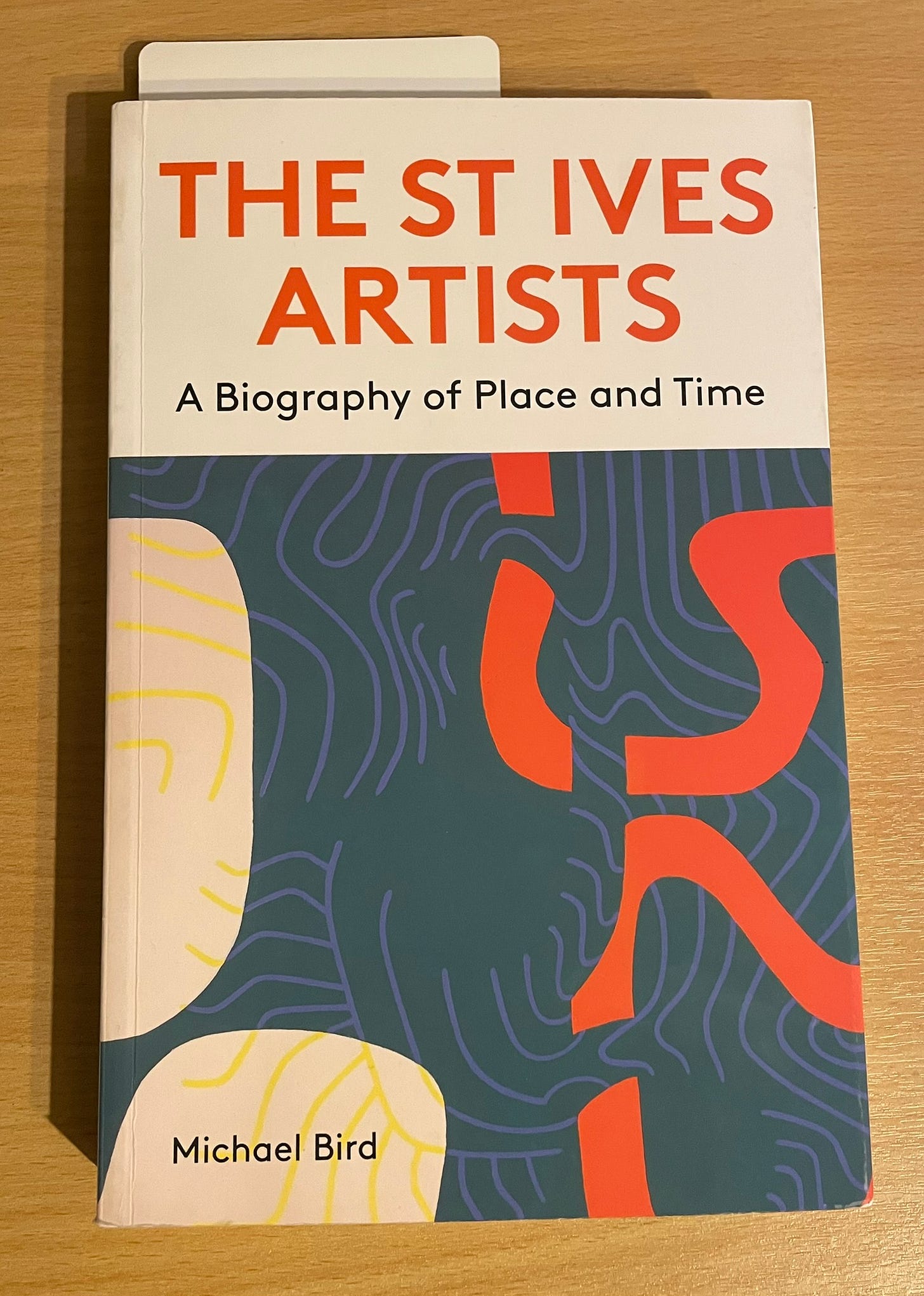
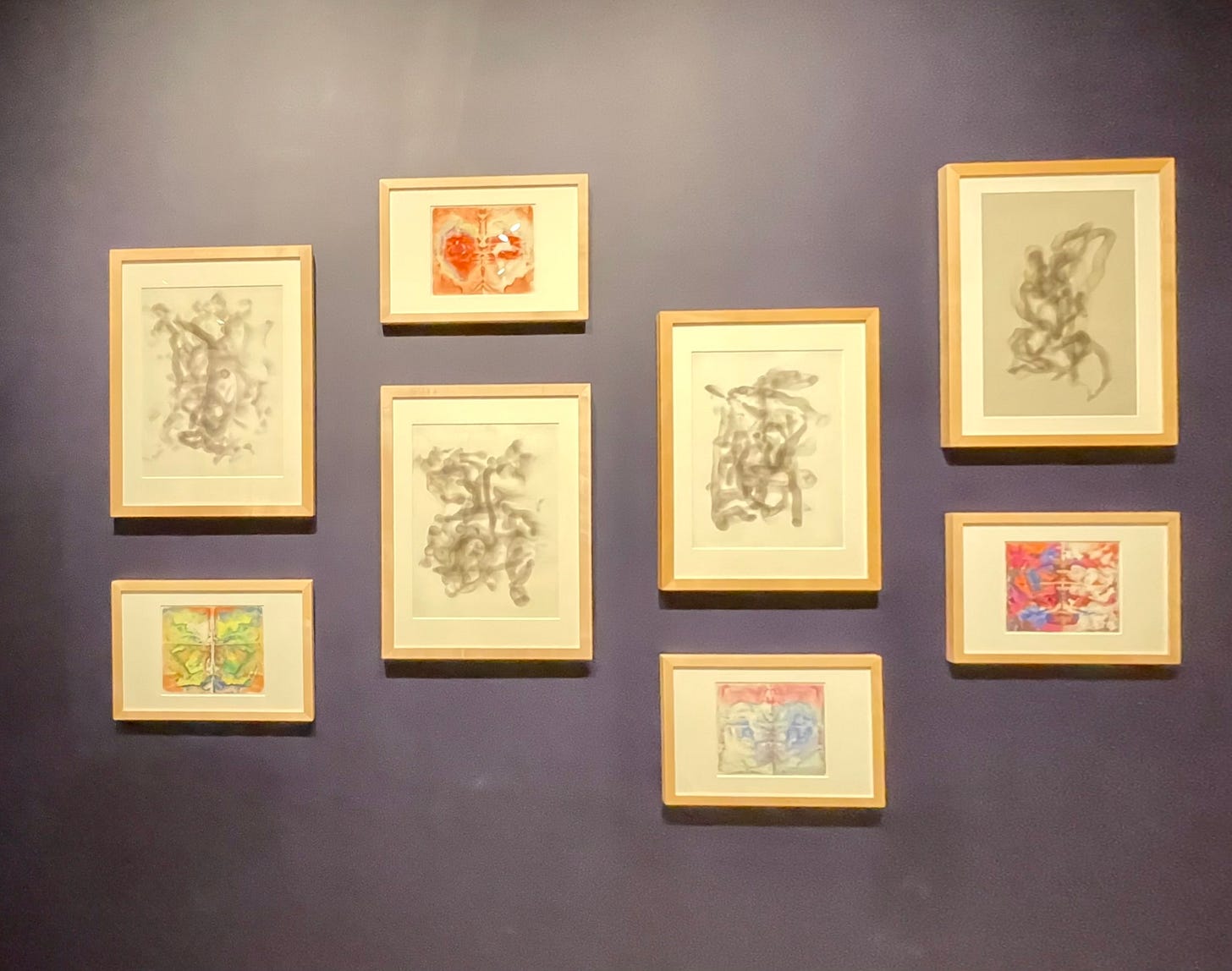
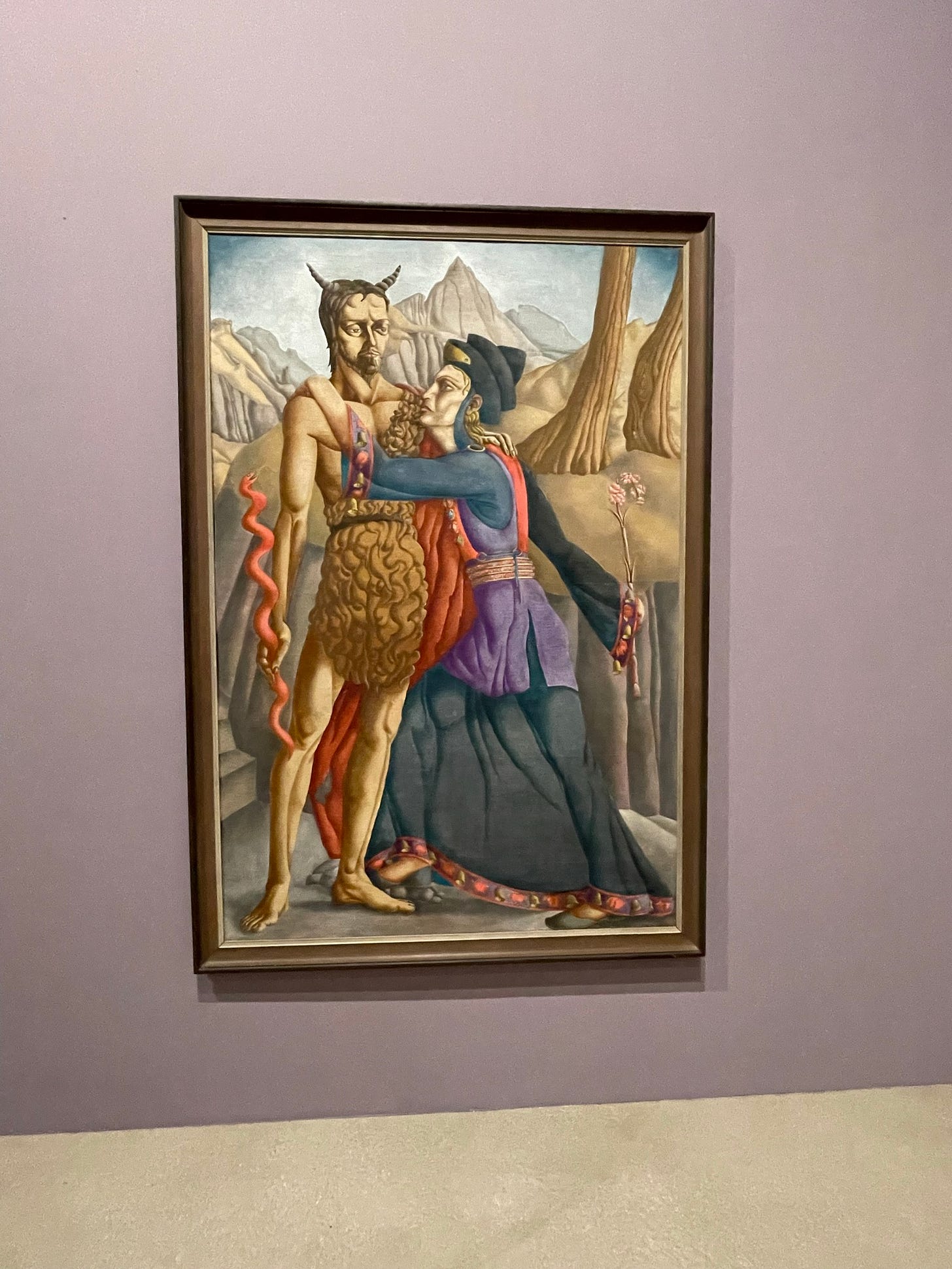
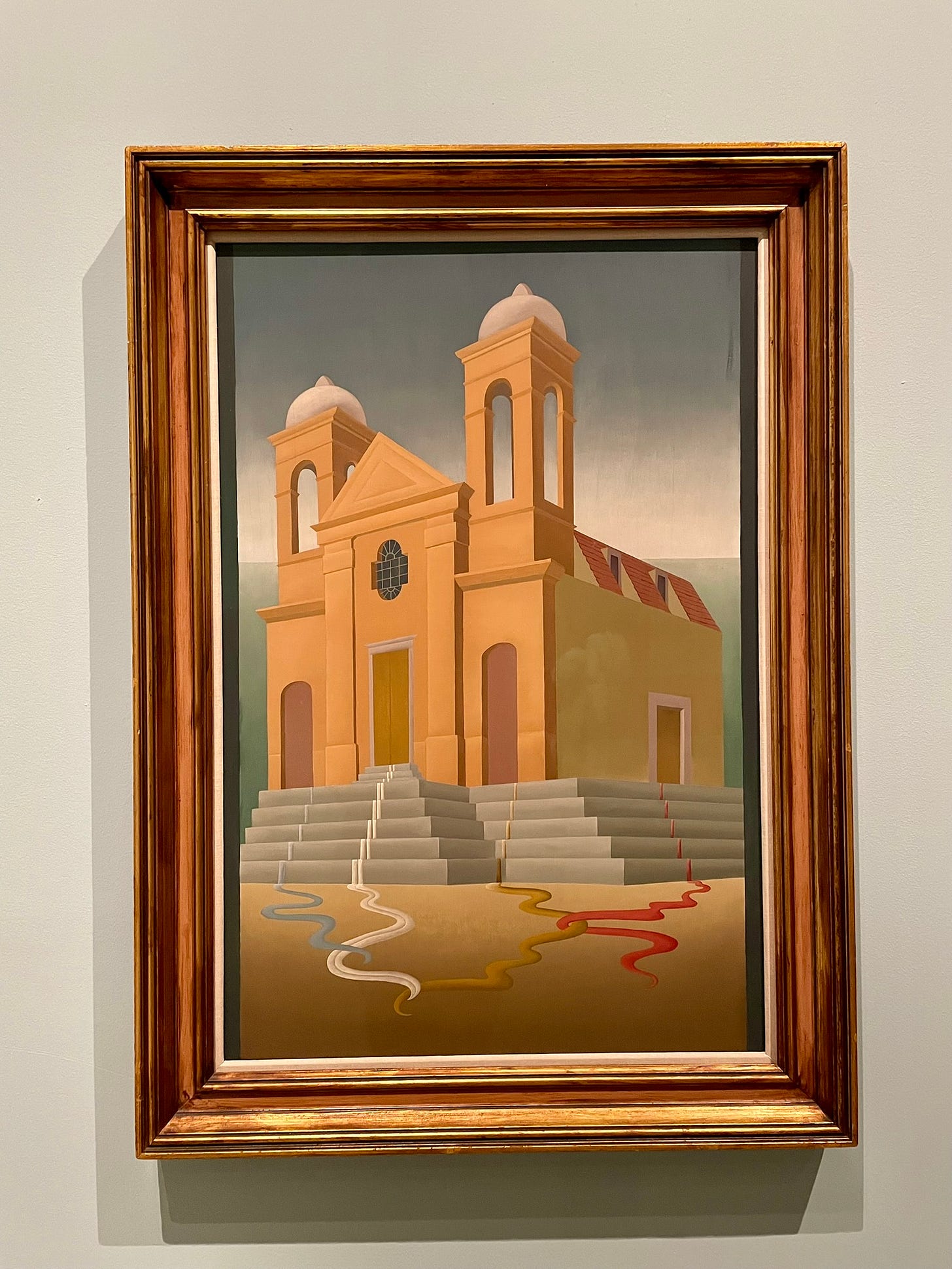
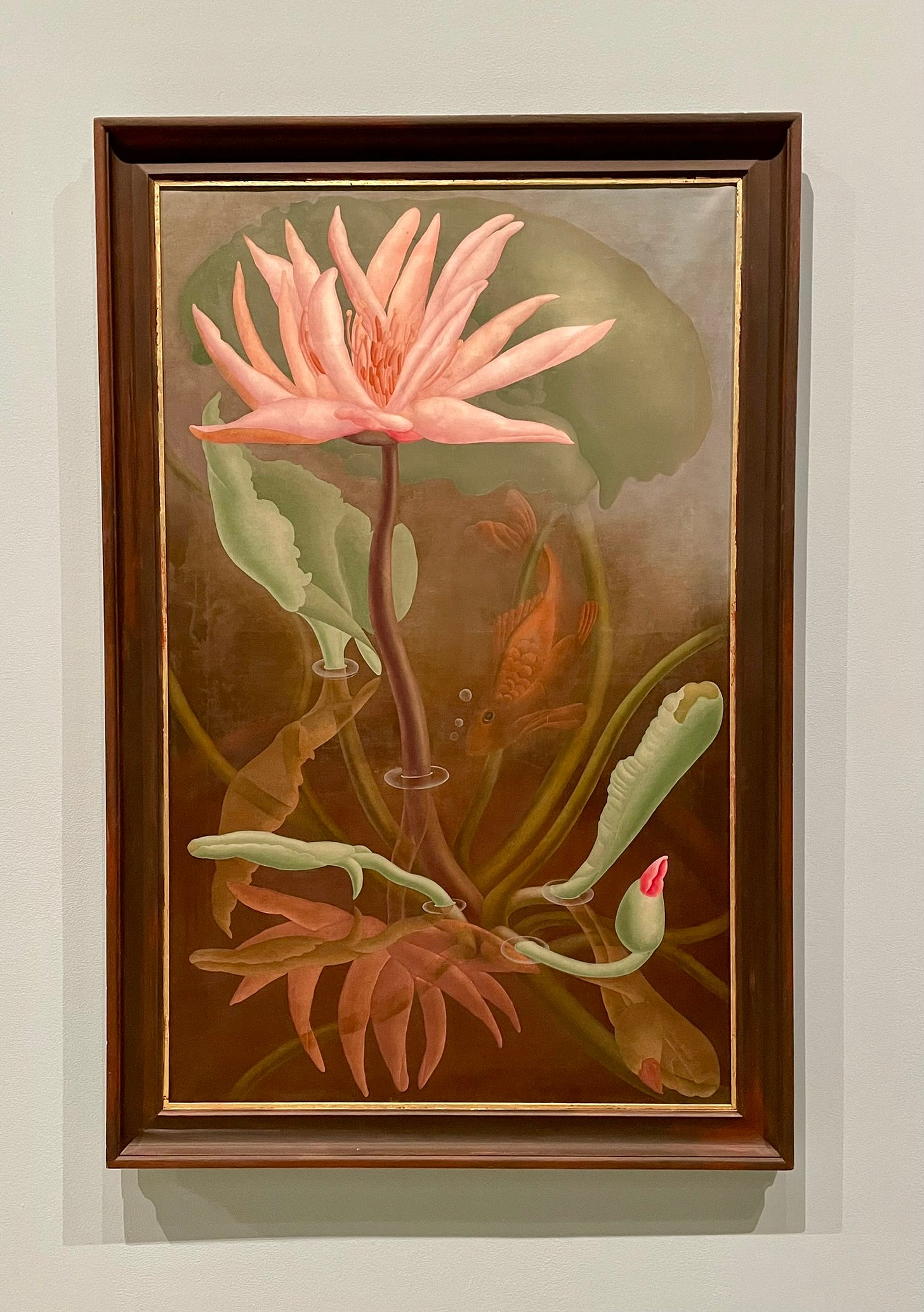
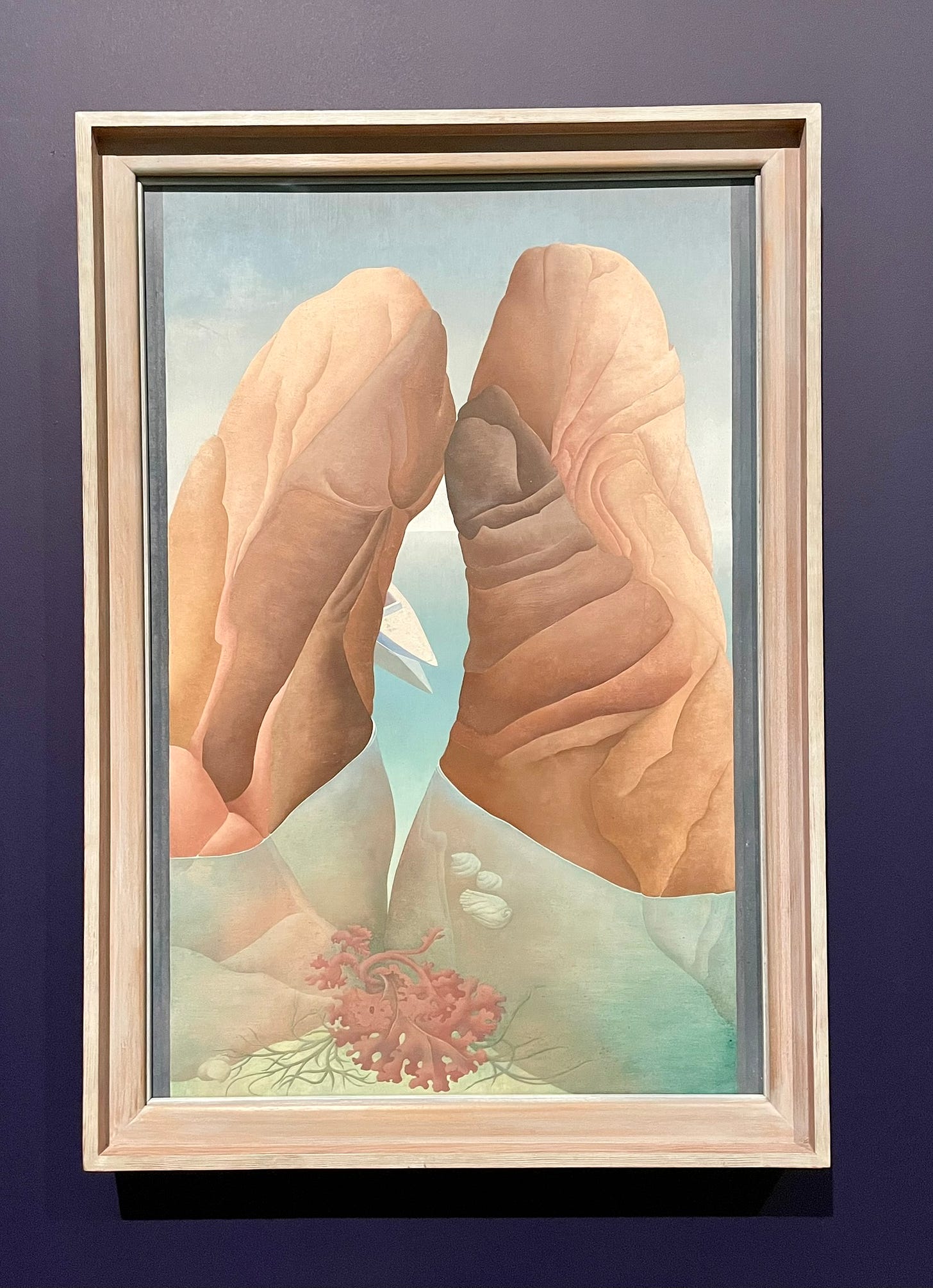
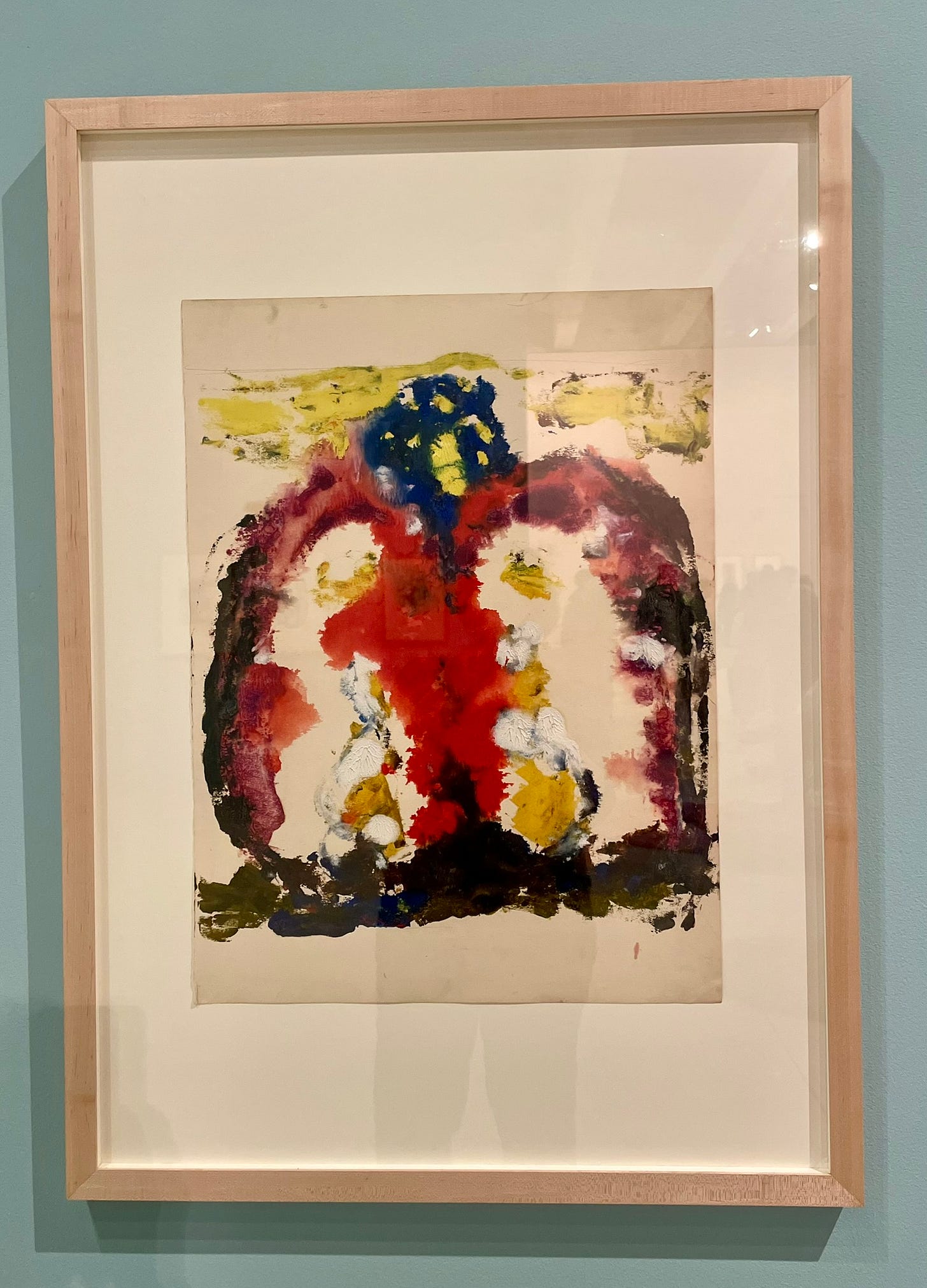

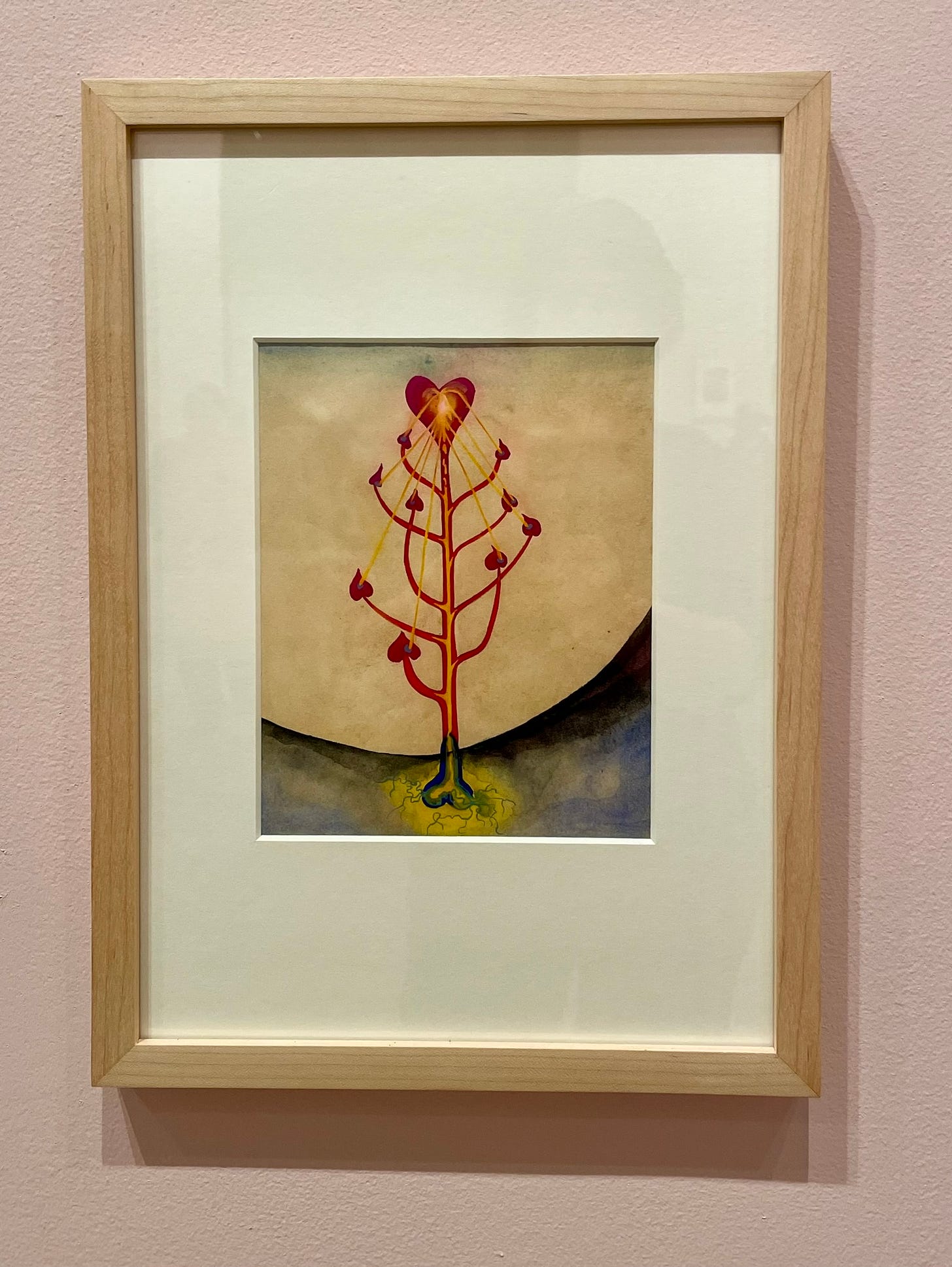

I didn't know about this Tate Gallery. It sounds like a fun trip!
Good to see our critic on the train!